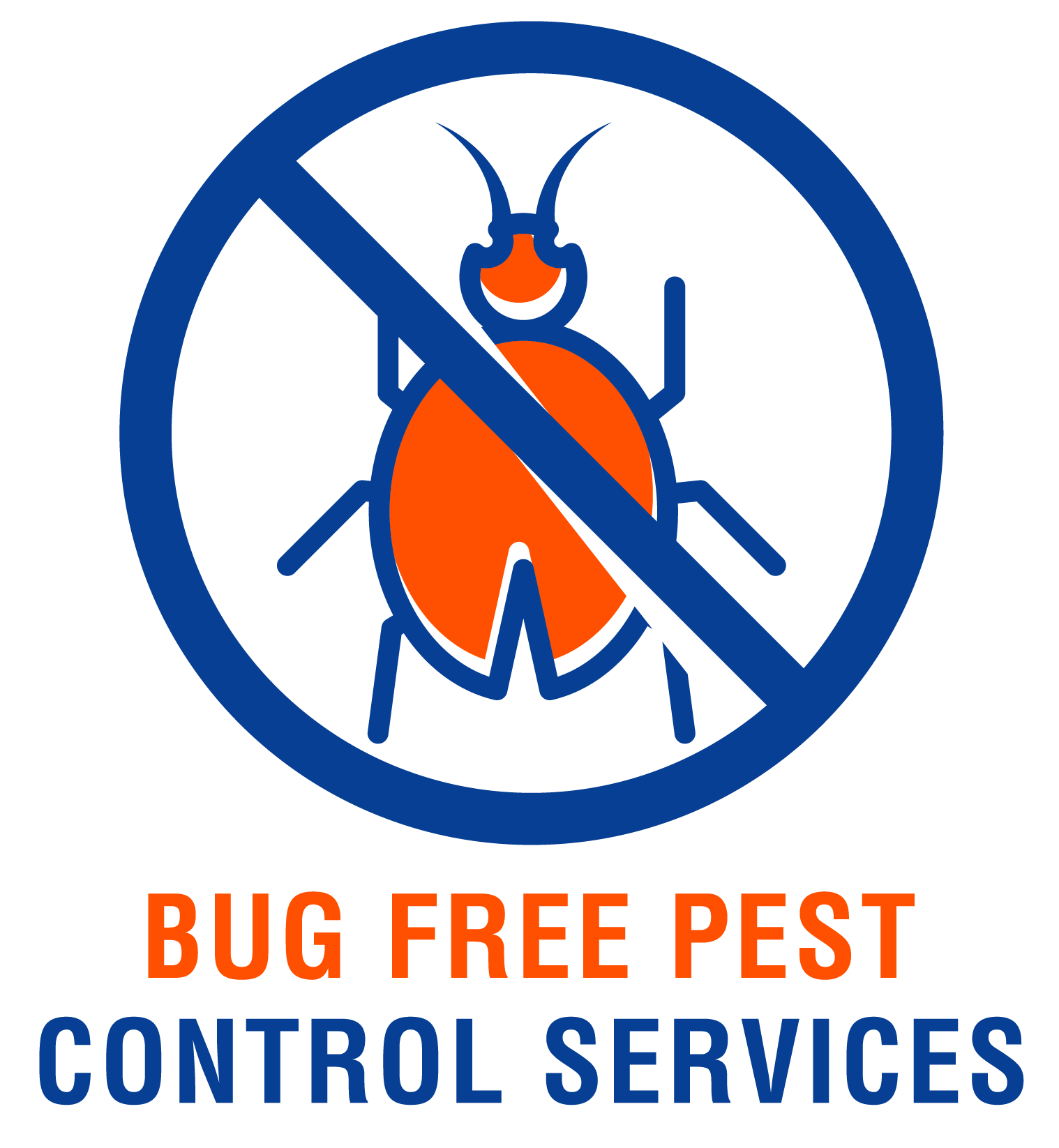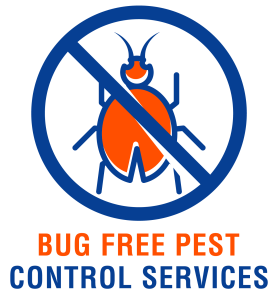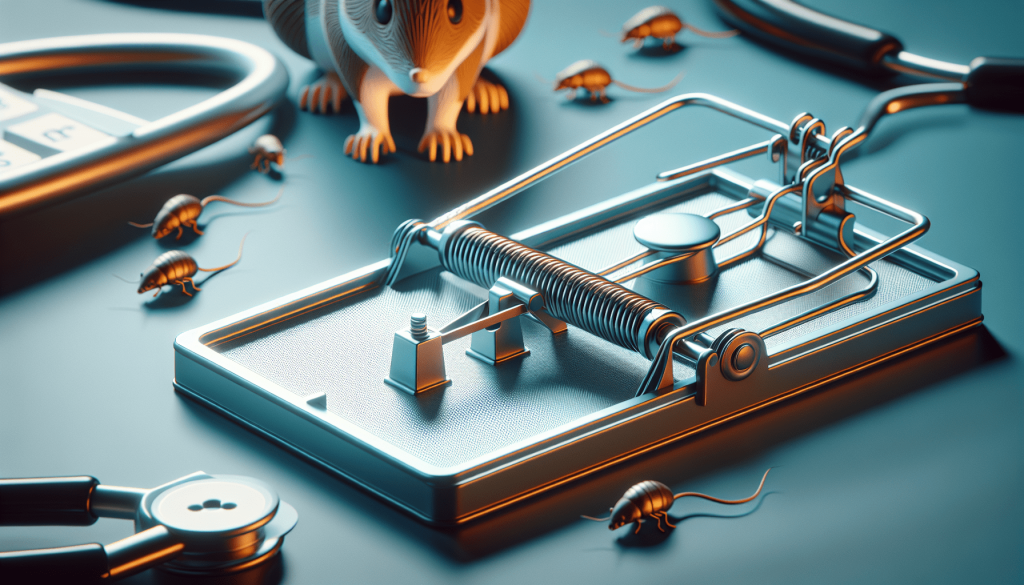Imagine running a healthcare facility where patients come to seek treatment and recover in a safe, clean environment. However, the presence of pests can pose a serious threat to the well-being of both patients and staff. That’s why it is essential to implement effective pest control solutions. In this article, we will explore the importance of pest control in healthcare facilities and discuss various strategies to effectively combat and prevent pest infestations. By prioritizing pest control, you can ensure a healthier and safer environment for all who step through your facility’s doors.
Importance of Pest Control in Healthcare Facilities
Pest control plays a crucial role in maintaining the overall health and safety of healthcare facilities. As a second-person perspective, you understand the significance of maintaining a clean and pest-free environment in healthcare settings. Here, we will explore the various reasons why pest control is of utmost importance in healthcare facilities.
Prevention of Disease Transmission
One of the primary reasons for implementing effective pest control measures in healthcare facilities is to prevent the transmission of diseases. Pests such as rodents, cockroaches, and flies are known carriers of various pathogens that can pose serious health risks to patients, staff, and visitors. By eliminating these pests and implementing preventive measures, you can significantly reduce the risk of disease transmission and keep the facility a safe and healthy environment.
Preservation of Reputation and Patient Trust
Maintaining a strong reputation is crucial for any healthcare facility, as it directly influences patient trust. The presence of pests can damage the reputation of a healthcare facility, creating a negative image and raising concerns about hygiene and safety standards. By prioritizing pest control, you can ensure that your facility remains a clean and reliable place for patients to seek treatment, fostering trust and loyalty among patients and the community.
Regulatory Compliance
Healthcare facilities are subject to numerous health and safety regulations, and pest control is an essential aspect of compliance. Regulatory bodies such as health departments and licensing agencies have specific requirements regarding pest prevention and control measures. Adhering to these regulations not only ensures the safety and wellbeing of patients but also protects the facility from potential legal consequences and penalties.
Common Pest Problems in Healthcare Facilities
Healthcare facilities are vulnerable to various pest infestations, which can jeopardize the health, safety, and overall functioning of the facility. Being aware of the common pests that plague healthcare settings is crucial in implementing targeted pest control strategies.
Rodents and Small Mammals
Rodents and small mammals, such as rats and mice, are notorious pests that can cause significant damage to healthcare facilities. They have the ability to chew through electrical wires, contaminate food and medical supplies, and introduce diseases through their droppings and urine. These pests can easily find shelter in the nooks and crannies of healthcare facilities, making it essential to employ effective rodent control measures.
Cockroaches and Flies
Cockroaches and flies are not only a nuisance but also pose serious health risks in healthcare settings. Cockroaches can contaminate food and surfaces with their droppings, while flies can quickly spread disease-causing bacteria from one area to another. These pests thrive in environments with easily accessible food sources and moist conditions, making healthcare facilities an attractive target. Implementing effective control strategies targeting cockroaches and flies is crucial in maintaining a pest-free environment.
Bed Bugs and Other Pests
Bed bugs, although not directly associated with diseases, can disrupt the quality of care provided in healthcare facilities. These nocturnal pests can infest bedding, upholstery, and even patient belongings, causing discomfort, stress, and sleeping difficulties for patients. Other pests, such as ants, termites, and spiders, can also find their way into healthcare facilities and create an unsightly and unhygienic environment. Swift and targeted pest control measures are necessary to prevent infestations and maintain a clean and comfortable space for patients and staff.
Integrated Pest Management (IPM)
Integrated Pest Management (IPM) is a holistic and environmentally-friendly approach to pest control that focuses on long-term prevention and control rather than relying solely on pesticides. Implementing IPM in healthcare facilities offers several benefits, including reduced pesticide use, enhanced sustainability practices, and improved effectiveness in pest eradication.
Holistic Approach to Pest Control
IPM takes a comprehensive approach to pest control, combining multiple strategies to achieve long-term pest prevention and management. This approach involves careful monitoring, identification of pest problems, prevention techniques, and the use of least-toxic control methods. By addressing the root causes of pest infestations, such as entry points and attractants, IPM ensures a sustainable and effective pest control solution.
Identification of Pest Problems
Proper identification of pest problems is crucial in developing an effective pest control plan. Understanding the specific pests that plague a healthcare facility allows for targeted control measures to be implemented. Trained professionals can accurately identify pests, assess the extent of infestation, and recommend appropriate control strategies based on the unique needs of the facility.
Prevention and Monitoring Strategies
Prevention is a key aspect of IPM and involves implementing various strategies to discourage pest infestations. These may include sealing entry points, installing screens on windows, and implementing proper waste management practices. Monitoring is equally important and involves regular inspections to detect pests at the earliest stages. By adopting preventive and monitoring strategies, healthcare facilities can proactively minimize the risk of pest infestations and maintain a pest-free environment.
Least Toxic Methods of Control
IPM prioritizes the use of least toxic methods of pest control, minimizing the reliance on chemical pesticides. This approach emphasizes environmentally-friendly alternatives such as physical barriers, traps, and biological control methods to manage pest populations. By reducing the use of chemical pesticides, IPM promotes the safety and well-being of patients, staff, and the overall ecosystem.
Pest Control Best Practices for Healthcare Facilities
Implementing pest control best practices is essential in ensuring the long-term effectiveness of pest control measures in healthcare facilities. These practices focus on proactive management, staff education, and maintaining a clean and pest-free environment.
Regular Inspection and Monitoring
Performing regular inspections and monitoring for signs of pest activity is a fundamental practice for effective pest control. Trained professionals should conduct thorough inspections of all areas, including storage rooms, kitchens, patient rooms, and HVAC systems, to identify early signs of infestation. By detecting pests at their initial stages, prompt action can be taken to prevent further spreading and minimize potential damage.
Sealing Entry Points
Sealing entry points is crucial in preventing pests from infiltrating healthcare facilities. Pests can easily enter through gaps in doors, windows, and utility openings. By implementing proper sealing techniques, such as installing door sweeps, sealing cracks, and repairing screens, potential entry points can be effectively blocked, reducing the risk of infestation.
Proper Waste Management
Proper waste management is essential in preventing pest infestations in healthcare facilities. Waste areas, including bins, dumpsters, and garbage storage rooms, should be regularly cleaned and maintained. Proper disposal of waste, including medical waste, is vital to eliminate potential food sources that attract pests. By implementing strict waste management protocols and providing adequate training to staff, healthcare facilities can minimize the risk of pest infestations.
Maintaining Cleanliness and Sanitation
Cleanliness and sanitation are paramount in healthcare facilities, as they directly impact patient health and safety. Regular cleaning and disinfection should be performed in all areas, paying special attention to high-risk areas such as patient rooms, kitchens, and bathrooms. By ensuring a clean and hygienic environment, healthcare facilities can deny pests the necessary conditions to survive and reproduce.
Training and Education of Staff
Raising awareness and providing proper training to staff members is essential in maintaining effective pest control practices. All healthcare facility staff should be educated on the importance of pest control, including how to identify signs of infestation, report issues, and follow protocols. By empowering staff with the necessary knowledge and skills, healthcare facilities can create a collaborative environment that actively contributes to pest prevention and control efforts.
Chemical Control Methods in Healthcare Facilities
Although the emphasis is on non-chemical control methods, there are instances where chemical control may be necessary in healthcare facilities. Proper selection and application of chemicals, along with safety precautions, are crucial to ensure effective and safe pest control.
Choosing the Right Chemicals
When chemical control is deemed necessary, healthcare facilities must carefully select appropriate chemicals for the specific pests and areas of application. It is important to choose pesticides that are approved for healthcare settings, as some chemicals may be harmful to patients, staff, or the environment. Working with licensed pest control professionals can help ensure the proper selection of chemicals that are both effective and safe.
Proper Application Techniques
To ensure the effectiveness of chemical control methods, proper application techniques must be followed. Pest control professionals should be trained in the correct methods of applying pesticides, ensuring that the chemicals are applied in the appropriate amounts and targeted areas. Strict adherence to application instructions and safety guidelines is essential to prevent potential health hazards and maximize the efficiency of chemical control.
Safety Precautions and Risk Management
Working with chemicals always poses some level of risk, so it is imperative to prioritize the safety of patients, staff, and the environment when implementing chemical control methods. Strict adherence to safety precautions, such as wearing personal protective equipment (PPE), ensuring proper ventilation, and following necessary disposal protocols, is vital in minimizing potential harm and ensuring the safe use of chemicals in healthcare facilities.
Non-Chemical Control Methods in Healthcare Facilities
While the focus is on minimizing chemical pesticide use, there are various effective non-chemical control methods that can be employed in healthcare facilities. These methods provide environmentally-friendly solutions while effectively managing pests.
Physical Barriers and Traps
Physical barriers and traps are highly effective in preventing pest entry and eliminating existing populations. Installing screens on windows, doors, and vents can prevent flying insects and rodents from entering healthcare facilities. The strategic placement of traps can help capture and monitor pest populations without the use of chemicals. These non-chemical control methods provide a safe and sustainable solution for pest control in healthcare facilities.
Heat Treatments
Heat treatments are an alternative to chemical pesticides that can effectively eliminate bed bugs and other pests. By raising the temperature in infested areas to lethal levels, heat treatments kill pests without leaving harmful residues. This non-chemical method can be especially useful in sensitive areas such as patient rooms and operating theaters, where the use of pesticides may pose additional risks.
Biological Control
Biological control methods involve the use of natural predators, parasites, and pathogens to manage pest populations. Implementing biological controls, such as introducing beneficial insects or using microbial agents, can effectively control pests while minimizing the environmental impact. Healthcare facilities can benefit from these eco-friendly approaches to pest control, ensuring long-term sustainability and minimal risks.
Working with Professional Pest Control Services
To effectively address the pest control needs of healthcare facilities, it is often necessary to work with professional pest control services. Licensed pest control providers have the experience and expertise required to develop tailored pest control plans and ensure compliance with regulations.
Selecting Reliable and Licensed Service Providers
When choosing a pest control service provider for healthcare facilities, reliability and licensing are critical factors to consider. Ensure that the service provider holds the necessary qualifications, licenses, and certifications from reputable organizations. Additionally, consider their track record and client reviews to gauge their reliability and overall quality of service.
Collaboration and Communication
Effective collaboration and communication between healthcare facility staff and pest control professionals are essential for successful pest control. It is important to establish an open line of communication, with both parties sharing information about pest sightings, concerns, and areas of improvement. Regular meetings and inspections allow for the proactive identification and resolution of pest control issues.
Scheduled Maintenance and Documentation
Working with professional pest control services involves establishing a schedule for regular inspections and maintenance. A well-documented pest control plan outlines the frequency of inspections, treatments, and preventive measures. This documentation helps track the progress and efficacy of the pest control program, ensuring continuous improvement and accountability.
Special Considerations for Healthcare Facilities
Healthcare facilities have unique considerations when it comes to pest control due to the sensitive nature of their environments and equipment. Addressing these considerations is crucial in developing effective pest control strategies that minimize risks and ensure patient and staff safety.
Sensitive Environments and Equipment
Healthcare facilities often house sensitive equipment, medical supplies, and treatment areas that require careful consideration during pest control activities. Pest control professionals must be trained on how to navigate these environments to prevent damage or contamination. Special protocols should be in place to protect critical equipment and ensure uninterrupted healthcare services during pest control procedures.
Patient and Staff Safety
Patient and staff safety is paramount in healthcare facilities, and this extends to pest control activities. During pest control procedures, it is necessary to prioritize the health and well-being of individuals present. Proper communication and coordination between pest control professionals and facility staff can help ensure minimal disruption and reduced exposure to chemical and non-chemical control methods.
Compliance with Health Regulations
Healthcare facilities are bound by strict regulations regarding pest control, and compliance is crucial. Working with professional pest control services experienced in healthcare industry regulations helps ensure that all required protocols, including documentation and reporting, are met. Compliance with health regulations ensures that the facility is in accordance with industry standards and remains dedicated to maintaining a safe and hygienic environment.
Preventing Pest Infestations in Healthcare Facilities
Taking proactive measures to prevent pest infestations is key to maintaining a pest-free environment in healthcare facilities. By addressing potential entry points and implementing preventive measures, healthcare facilities can reduce the risk of pest infestations and minimize the need for reactive pest control measures.
Building Design and Construction
Incorporating pest prevention measures during the design and construction of healthcare facilities is crucial. Proper sealing of construction gaps, installation of screens on openings, and consideration of pest-resistant materials can significantly reduce the likelihood of pest entry. Collaborating with architects and construction teams ensures that pest prevention is prioritized from the beginning.
Proper Storage and Disposal of Food and Waste
Food and waste management are critical in preventing pest infestations. Strict protocols should be established for the proper storage and disposal of food items, ensuring that they are stored in pest-proof containers and regularly inspected for signs of infestation. Waste should be disposed of promptly and in accordance with relevant health regulations.
Routine Maintenance and Repairs
Routine maintenance and prompt repairs play a vital role in preventing pest infestations. Regularly inspecting and repairing plumbing leaks, broken seals, and damaged screens prevents pests from accessing healthcare facilities. By addressing maintenance issues promptly, healthcare facilities can minimize potential pest entry points and create a more robust pest prevention system.
Continuous Improvement and Adaptation
Pest control in healthcare facilities is an ongoing process that requires continuous evaluation, adaptation, and improvement. By actively monitoring and assessing pest control measures, healthcare facilities can stay ahead of emerging pest control challenges and ensure the effectiveness of their pest management strategies.
Regular Evaluation and Assessment
Conducting regular evaluations and assessments of pest control activities allows healthcare facilities to identify areas for improvement and adapt their pest control plans accordingly. Collecting data on pest sightings, treatment outcomes, and staff feedback helps identify potential weaknesses and make informed decisions to enhance pest prevention and management efforts.
Adapting to Emerging Pest Control Challenges
Pest control challenges can evolve over time, requiring healthcare facilities to adapt their strategies accordingly. New pest species, changes in pest behavior, and advancements in control techniques may necessitate updates to existing pest control plans. Regular communication with pest control professionals and staying up-to-date with industry developments are crucial in addressing emerging challenges.
Staff Training and Knowledge Updates
Continuous staff training and knowledge updates are essential in maintaining effective pest control practices in healthcare facilities. Regularly educating staff members on pest identification, reporting procedures, and preventive measures ensures their engagement in pest control efforts. Staff training sessions also provide an opportunity to disseminate information on emerging pest control challenges and the use of new control methods.
In conclusion, pest control is of utmost importance in healthcare facilities for various reasons. It prevents the transmission of diseases, preserves reputation and patient trust, and ensures regulatory compliance. Rodents, cockroaches, flies, and bed bugs are common pests that can cause significant problems in healthcare settings. Implementing Integrated Pest Management (IPM) offers a holistic approach to pest control, emphasizing prevention, identification, and least toxic methods. Pest control best practices include regular inspection, sealing entry points, proper waste management, cleanliness, and staff education. Chemical control methods should be carefully selected and applied, with proper safety precautions. Non-chemical control methods, such as physical barriers, heat treatments, and biological control, provide effective and sustainable solutions. Working with professional pest control services ensures reliability, collaboration, and scheduled maintenance. Special considerations, including sensitive environments, patient and staff safety, and compliance with health regulations, must be taken into account. Preventing pest infestations requires building design considerations, proper food and waste management, and routine maintenance. Continuous improvement and adaptation involve regular evaluation, adapting to emerging challenges, and staff training. By implementing these comprehensive pest control measures, healthcare facilities can maintain a safe and hygienic environment for all.


